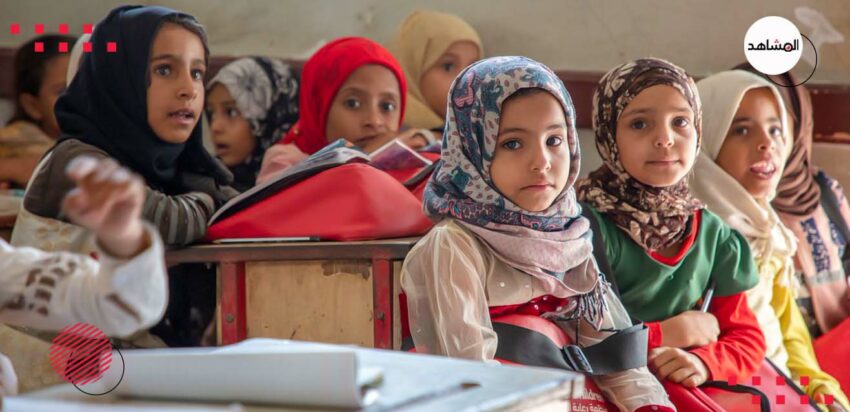By: Mujahid Hammoud
The waves of war displaced Um Yahya, 50, far from her childhood place in the Al-Durayhimi district of Al-Hodeidah province to the outskirts of Taiz in late 2018.
Speaking to Al-Mushahid, she said, “After the battles intensified, we had to flee death that was waiting for us. I escaped to a house owned by one of our relatives in Taiz City, accompanied by my two daughters and 11-year-old son.”
She continued, “We stayed with our relatives for about three months, and I felt I was a heavy burden on them. Due to our limited income and high rent charges in the city, we do not have the money to rent an apartment. My husband is a soldier, working as a security guard in an institution.”
She went on to say, “I was concerned about my son and his education, and that was a nightmare that haunted me every time I fell asleep, and I asked myself where we would go as the future ahead is unknown.”
Umm Yahya added: “Then my son decided to look for a job, despite his young age. I was worried about his safety because the place was new, and we knew nothing about it. I told him he was still young. But he said, ‘I have become a man now. And I will do whatever I can to make you happy, Mother.'”
With a sad tone, she said, “After a short time, he got a job opportunity in a grocery store, with a salary of 60,000 riyals, working from 8 a.m. until 6 p.m. After asking about a house for reasonable rent, he got one. However, it was on the city’s outskirts and near the frontlines. After that, he was enrolled in Ali School in Albarara to continue his education, despite the many obstacles we faced, such as bringing official documents and the overcrowding in public schools.”
Yahya is one of about half a million children of school age who live in displacement. Half of them are males, and the other half are females, according to Najeeb al-Saadi, the director of the Executive Unit for the Management of the Internally Displaced Persons Camps in Aden, told Al-Mushahid.
About 42% of the total children in the camps are not enrolled in education, and 18% of children in houses have not joined schools, according to Al-Saadi, stating that education in the camps is deplorable, as the illiteracy rate reached 17%.
He pointed out that 86% of the camps do not have schools, and 64% of the families in the displacement camps depend on children to earn a living, which deprives children of educational opportunities.
Al-Saadi indicated that the priorities for the education sector include creating the educational environment such as “school, book, educational staff,” providing school needs such as “school bag, school uniform,” and providing previous educational documents for students.
Density of displaced people in Marib
Nasser Muthana, director of the Executive Unit for the Management of the Internally Displaced Persons Camps in Marib, told Al-Mahshid that the displacement movement that the Unit monitored during 2022 was high, as the number of displaced families reached 1,573 families, consisting of 9,538 people, in the first half of 2022.
Marib province received the biggest number of displaced persons, with a total of 2.3 people, and this constitutes 75% of the total displaced persons in the monitored governorates, according to Al-Saadi.
Urgent educational needs
Muthanna said that there are urgent needs for the education sector that must be met to direct efforts toward finding good and appropriate educational opportunities.
There is a need to support the Education Office with the necessary technical capabilities, encourage displaced children to receive education, provide psychological and material support for creating an appropriate educational environment, and provide food support for school children.
Muthana also said there is a need for qualifying and training educational staff, building their professional capacities, and providing financial support to ensure their continuity in the educational process is a priority to ensure that displaced children enroll in education.
There is also a need to build new schools to absorb the significant increase in the number of new students in public schools, expand and rehabilitate existing educational facilities, provide displacement camps with alternative classrooms, and equip them with basic requirements.
The United Nations said in the Yemen Humanitarian Needs Overview document that more than 4.3 million people had been displaced in Yemen since 2015, making it the world’s fourth largest internal displacement crisis.

